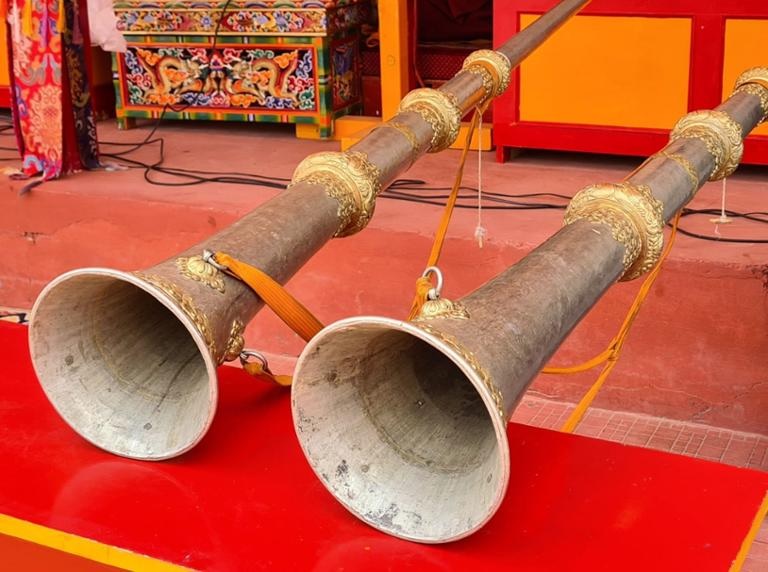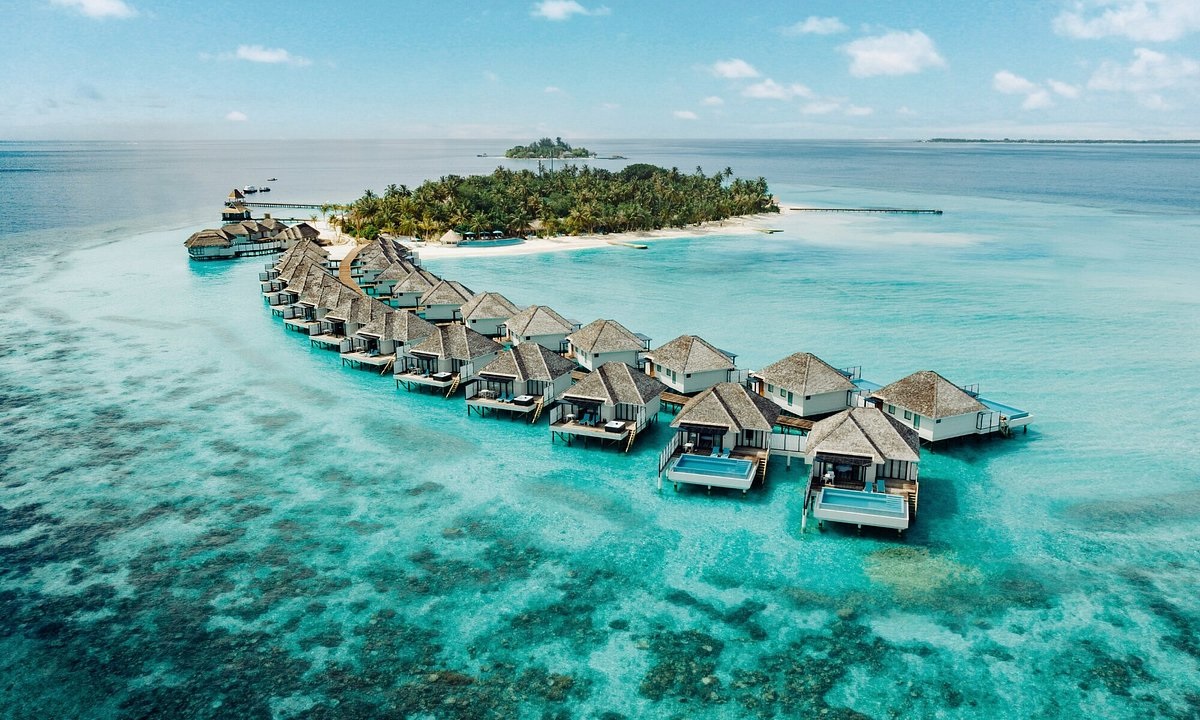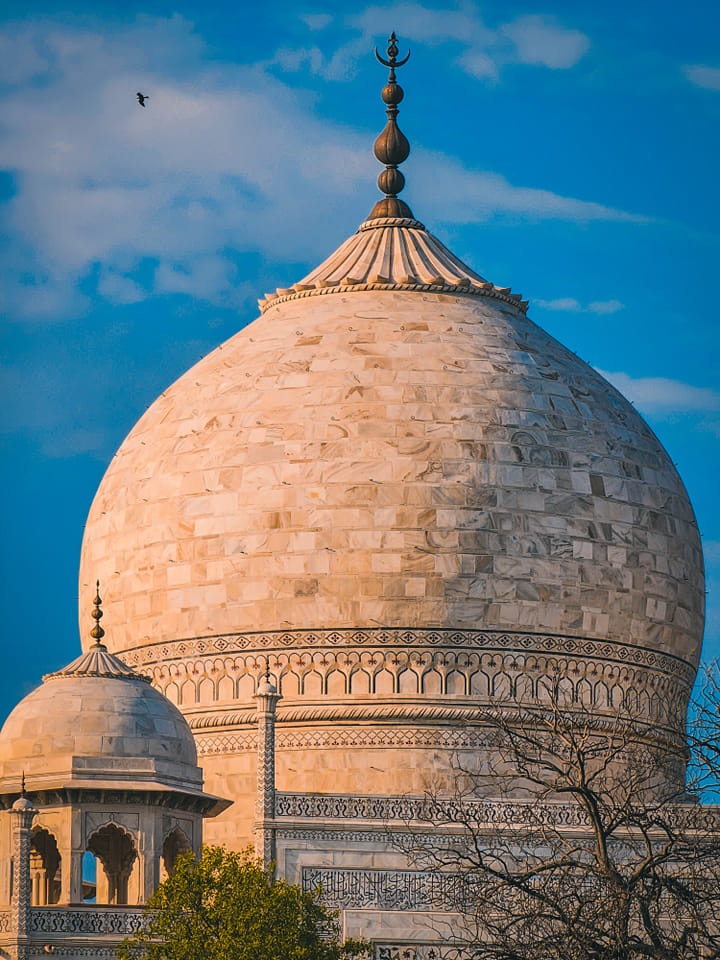Ladakh Cultural Tour by Delighted Journey: In northwest India lies the federal state of Ladakh, which is made up of three very different parts: Zanskar, Kargil, and on the other side of the Himalayas the distant Tibetan Plateau known as Ladakh.
LADAKH, derived from la-dwags which means “the Land of Passes”, is enclosed in the mountain ranges of the Himalayas and Karakorum. The territory is a miniature version of Tibet. Ladakh, a mecca of Buddhist spirituality and the last refuge of Tibetan monastic culture, is aptly named Little Tibet.
Everywhere in the valleys, villages and houses, at the bend of a path or at the top of a pass, the presence of the religious is visible, in the form of an engraved stone, a chörten (a kind of stupa) or prayer flags.
In a lunar setting, dominated by the snow-capped peaks of the Himalayas, discover the numerous and splendid gompas (monasteries), and its hospitable people, all along the Indus Valley, in sites that will take your breath away and the exceptional nature of the Nubra valley.
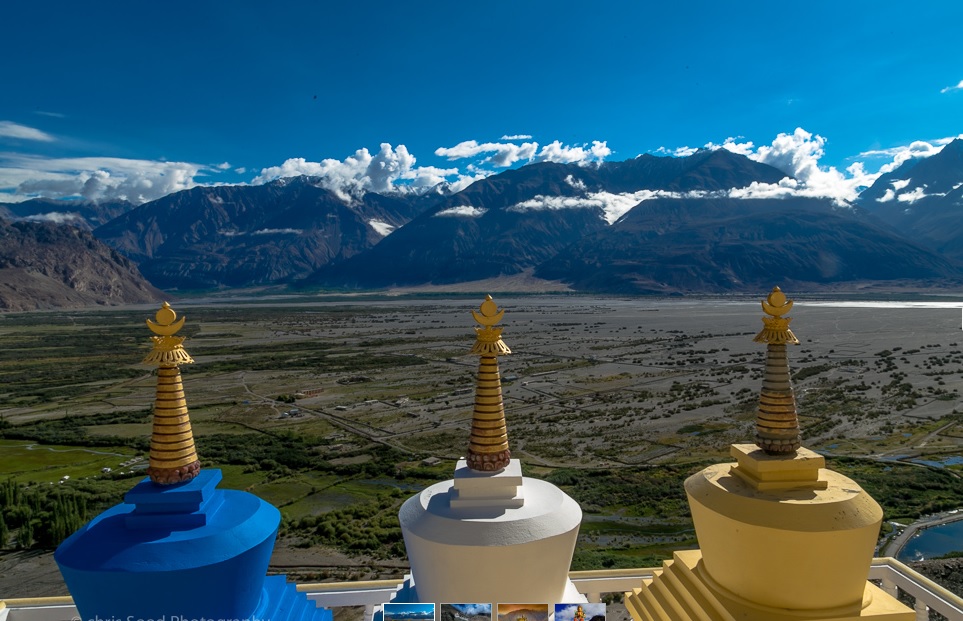
Program as under by Ladakh Cultural Tour:-
1st DAY: DEPARTURE FROM ORIGIN – ARRIVAL DELHI
Upon arrival at New Delhi International airport meet to our representative, & transfer to hotel near by airport.
2nd DAY: DELHI – LEH (Flight)
After breakfast flight to Leh, the “capital” of Ladakh. On arrival in the morning, transfer to the hotel. Day free to acclimatize to the height (around 3500 m).
Breakfast, lunch, dinner, and accommodation at Lharimo Alpine Villa Hotel (Leh).
In the afternoon, the guide will give us an introduction to Ladakh, Buddhism, and Tantrism and explain the program of the Ladakh Cultural Tour.
3rd DAY: LEH
Breakfast. Then visit the SHANTI STUPA, offered in 1985 by Japanese Buddhists, with the aim of promoting Buddhism and world peace. In the suburbs of Leh, we visit the monastery (gompa) of SANKAR belonging to the reformed order of Geluks-pa (= “Followers of Virtue”). Later, these received the popular name of “Yellow Hats”. The statues of Avalokiteshvara and Cakyamuni Buddha dominate the prayer rooms. Then stroll through this ancient trading center at the crossroads of the caravan trails of Central Asia, India and Tibet. After lunch, visit the LEH Palace, located on the ridge overlooking the city. It was the residence of the royal family until the 1830s before their exile in Stok. Then, visit the SPITUK gompa erected on a small hill overlooking the Indus valley and belonging to the order of the Yellow Caps. The monastery houses a collection of masks, ancient weapons and icons. Further up the hill is the Mahakal Temple which houses the terrifying mask of Vajrabhairava. This mask is only revealed at the annual festival in January. Dinner and accommodation at the Lharimo Alpine Villa Hotel (Leh).

4th DAY: LEH – excursion to HEMIS (TSE CHU) (45 km)
Today we will attend the Hemis (Tse Chu) festival which takes place every year to commemorate the birthday of Padmasambhava. His life and deeds are represented in a combination of colors, flags, masks, (sacred) dances and theater. Packed lunch.
Return to Leh. Dinner and overnight at the hotel.
5th DAY: LEH – NUBRA (115 km)
After an early breakfast. We leave for the NUBRA valley (valleys of flowers) in the northeast of the Ladakh valley passing through the villages of Horzey and Gangles. The road then climbs to reach Khardungla (5602 m.). It is the highest motorable road in the world. Let’s enjoy the beautiful landscapes and the beautiful view of Leh city. Packed lunch along the way. Arrival at Nubra and check-in at the hotel.
Then, visit the SAMSTALING monastery, founded by Lama Tsultrim Nima. Around 50 to 60 monks still reside in this ancient monastery (132 years old) and follow strict norms and rules. Then take a leisurely stroll in the surrounding area. Dinner and accommodation at Desert Himalaya Resort in Nubra Valley (accommodation in Excutive tents).
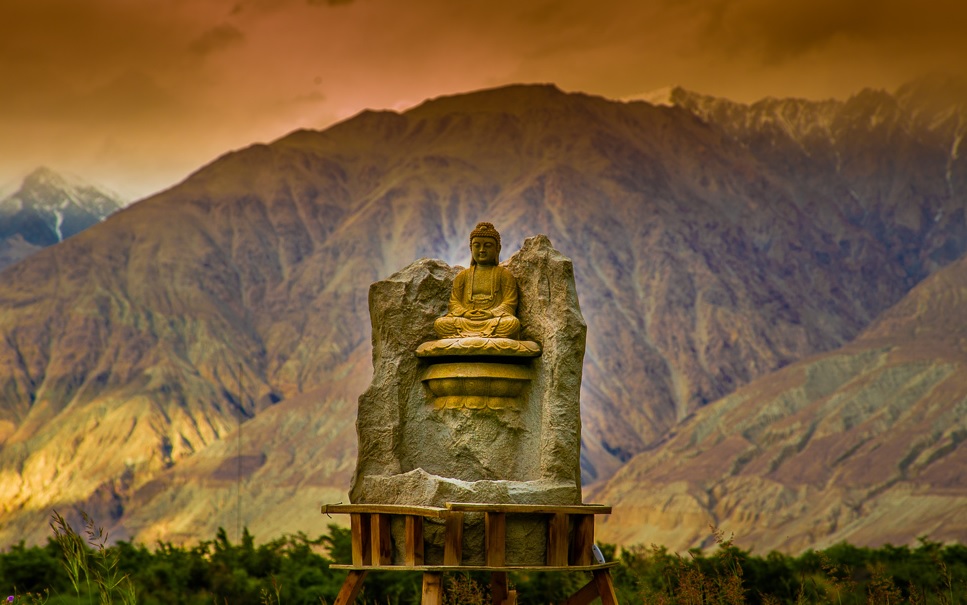
6th DAY: NUBRA – excursion to LAKE YARAB TSO – DISKIT (40 km)
Early breakfast. Visit the sacred lake of YARAB TSO, located near Sumur. This magnificent serene setting will not leave any visitor indifferent! Walk (short climb) to the banks of the sacred lake. Return to Sumur and visit the village and an old house (Stagra Pa) dating back more than 250 years. Lunch at the hotel. Then we head to DISKIT, capital of the Nubra valley. Visit the famous Buddhist monastery of Diskit, dating back over 500 years, magnificently located on a hill overlooking the valley. Return to Desert Himalaya Resort in Nubra Valley for dinner and accommodation.
7th DAY: NUBRA – LEH (130 km)
Breakfast. Then departure for LEH passing the Khardungla pass.
Packed lunch along the way. Dinner and accommodation at the Lharimo Alpine Villa Hotel (Leh).

8th DAY: LEH – LIKIR – ALCHI (50 km)
Today we are heading towards Alchi. Our first stop is LIKIR to visit one of the oldest monasteries in Ladakh. The monastery, located on a promontory, dominates the valley. This monastery serves as a school (the monks are taught to read and write). It houses a beautiful collection of tangkas (religious paintings on fabric) absolutely unique in Ladakh. The village is also famous for its potters. Continuation to ALCHI where we will first go to the hotel for check-in and lunch. Then visit the monastery. Magnificently located in a green oasis, surrounded by apricot trees, it is undoubtedly the most interesting of Ladakh’s monasteries and the only one not located on a hill. The “Sacred Enclosure” of Alchi is made up of six small temples, the oldest of which were erected in the 11th century by Rinchen Zangpo (958-1055). In the 10th – 11th centuries, the king of Ladakh commissioned Richen Zangpo, “the Great Translator”, to build a few monasteries including Tabo (996) and Dankar, in the Spiti valley, and Lamayuru and Alchi in Ladakh. The Alchi complex is among the oldest temples in Ladakh which houses marvelous frescoes of Persian influence, monumental statues, finely crafted wood carvings: they clearly illustrate the Indo-Kashmiri style which then prevailed in Ladakh before the period of Tibetan influence. The sumtsek worship hall houses three painted statues over 4 m high on two levels representing Avalokiteshvara, Maitreya and Manjusri. Sumtsek and dukhang paintings can be ranked among the masterpieces of world art. The Alchi Monastery is included on the UNESCO World Heritage List. Today, this monastery is no longer active and the monks have moved to the Likir monastery. Dinner and accommodation at Ule Topko Ethnic Cottages (Alchi).
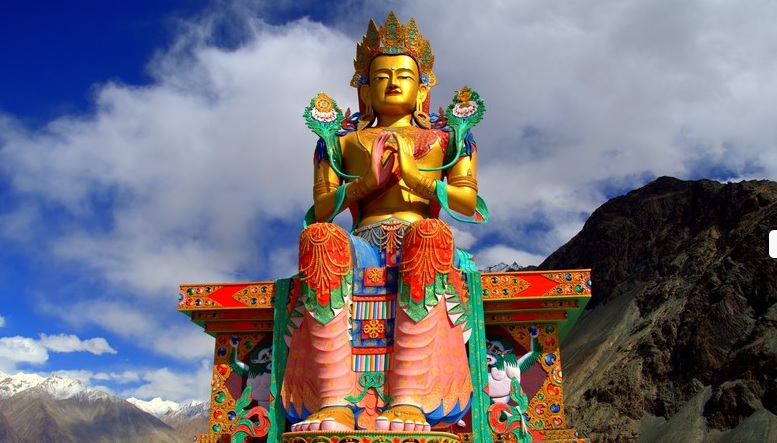
9th DAY: ALCHI – excursion to RIDZONG, CHULICHAN and LAMAYURU (135 km)
After early breakfast, visit the RIZONG monastery whose name means “mountain fortress”. The monastery is nestled in a grandiose mountain circus. We will also discover the small convent for nuns of CHULICHAN, founded by the founder of Rizong (which is a monastery of monks), for his wife and his sister. A very beautiful walk allows us to access it. Today, the monastery is home to 25 nuns who run a school for girls. Continue to LAMAYURU. Lunch at the Moonland restaurant. The Yung-Drung monastery of Lamayuru is located at an altitude of 3800 m in an incredible rock cirque with unreal colors. It dominates the village hidden at the bottom of the valley. Lamayuru, the oldest gompa in Ladakh founded as was the case of Alchi by the “Great Translator” Rinchen Zangpo, belongs to the Drigung-Kagyupa order.
On the way back, we make another photo stop at the fascinating “landscape of the moon”.
Dinner and accommodation at Ule Ethnic Cottages (Alchi).
10th DAY: ALCHI – BASGO – PHYANG – LEH (90 km)
Breakfast. We first visit the BASGO fortress comprising a 500 year old citadel and a 400 year old monastery, built of dried mud bricks. From here we have a very beautiful view. We continue towards PHYANG. Phyang Hill served as the setting for the monastery known as Tashi Chozong, founded in 1515. The complex is home to a number of shrines and exquisite wall paintings dating back to the royal period.
Another attraction of Phyang Gompa is the ancient museum, dating back over 900 years. The museum houses a rich collection of idols, tangkas but also Chinese, Tibetan and Mongolian firearms, harnesses, etc. The monastery hosts sacred dances on the 2nd and 3rd day of the 6th month of the Tibetan calendar. Continue to Leh where we have lunch at the hotel. Free time. Dinner and accommodation at the Lharimo Alpine Villa Hotel (Leh).

11th DAY: LEH – MATHO, STAKNA and STOK excursion (55 km)
Breakfast at hotel. In the morning towards MATHO where there is a monastery belonging to the order of Saskya (Red Caps). From this place we have a fabulous view of the Indus Valley and the Stakna gompa, which we will visit next. Visit to the STAKNA monastery (Stakna means “The Tiger’s Nose”). It was built some 500 years ago on top of a high isolated rock and resembles a tiger’s nose. This small monastery belongs to the order of the Red Caps. Lunch with a local family in Stok. Then visit the STOK palace, still inhabited by the descendants of the last Ladakhi king. Part of the building has been converted into a museum and houses the crown jewels.
Dinner and accommodation at the Lharimo Alpine Villa Hotel (Leh).
12th DAY: LEH – THIKSEY, CHEMDAY and HEMIS excursion (66 km)
Breakfast at hotel. Today, visit the THISKEY cloister (15th century).
This gompa, which is photographed a lot, is one of the most impressive architecturally. This red and ocher temple complex will leave us with an unforgettable impression. Continue to the CHEMDAY monastery and visit. It was founded 365 years ago by Lama Tagsang Raschen and houses a sacred image of Padmasambhava. Lunch with the local population in the village of Sakti. About fifty kilometers from Leh stands the HEMIS monastery, residence of the leader of the Drukpa (Red Caps) sect when he stays in Ladakh. The monastery was re-established in 1672 by the Ladakh king Sengge Namgyal. Visit the HEMIS museum, which contains numerous works of art. Return to Leh. Dinner and accommodation at the Lharimo Alpine Villa Hotel (Leh) in Ladakh Cultural Tour.
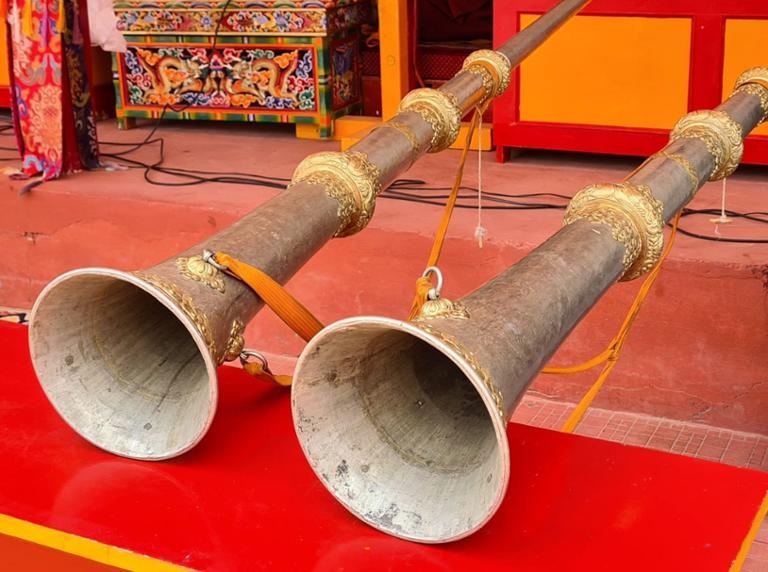
13th DAY: LEH
For our last day in Ladakh, we visited the Mahabhodi International Meditation Center, founded in 1986 to provide both spiritual instruction and humanitarian services to poor people in remote areas of Ladakh.
After lunch at the hotel, we take a walk (around 2 hours) through Leh village on the foothills of the mighty Khardunglapass. You will get a glimpse of traditional Ladakhi village life and be charmed by the hospitality and friendliness of the people along the way.
Dinner and accommodation at the Lharimo Alpine Villa Hotel (Leh) by Delighted Journey in Ladakh Cultural Tour.
14th DAY: LEH – DELHI (Flight)
Early breakfast and transfer to Leh airport. Flight to DELHI with Air India or IndiGo.
On arrival in Delhi, transfer to the Holiday Inn Express hotel (Delhi Airport), lunch and free time. The rooms will be at our disposal until departure time.
As per your flight time schedule, one of our staff drop you at International airport. End our trip.
14 days Ladakh Cultural Tour by Delighted Journey.

